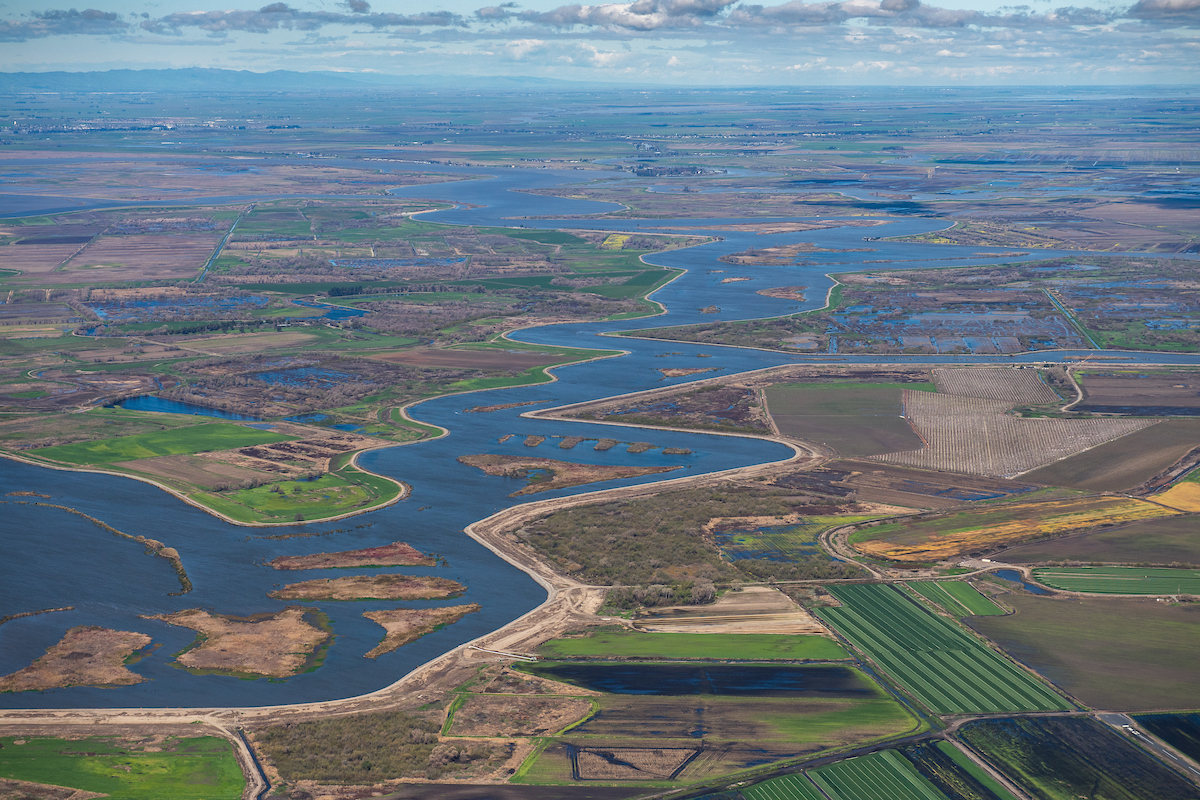Water policy blueprint will guide state actions, support regional efforts
Safe drinking water, groundwater recharge, healthy waterways, progress on Salton Sea among top priorities
From the Office of the Governor:
 Governor Gavin Newsom today released a final version of the Water Resilience Portfolio, the Administration’s blueprint for equipping California to cope with more extreme droughts and floods, rising temperatures, declining fish populations, over-reliance on groundwater and other challenges.
Governor Gavin Newsom today released a final version of the Water Resilience Portfolio, the Administration’s blueprint for equipping California to cope with more extreme droughts and floods, rising temperatures, declining fish populations, over-reliance on groundwater and other challenges.
The portfolio outlines 142 state actions to help build a climate-resilient water system in the face of climate change. The actions tie directly to Administration efforts to carry out recent laws regarding safe and affordable drinking water, groundwater sustainability and water-use efficiency. They also elevate priorities to secure voluntary agreements in key watersheds to improve flows and conditions for fish, address air quality and habitat challenges around the Salton Sea and protect the long-term functionality of the State Water Project and other conveyance infrastructure.
“Water is the lifeblood of our state, sustaining communities, wildlife and our economy,” said Governor Newsom. “For more than a year, my Administration has worked to assemble a blueprint to secure this vital and limited resource into the future in a way that builds climate resilience for all communities and sustains native fish and the habitat they need to thrive.”
The California Natural Resources Agency, California Environmental Protection Agency, and California Department of Food and Agriculture solicited extensive public input to prepare the portfolio in response to an April 2019 Executive Order (N-10-19).
“The state’s playbook for managing water in coming decades must be broad and comprehensive,” said Secretary for Natural Resources Wade Crowfoot. “The portfolio identifies how the state can help regions maintain and diversify water supplies, protect and enhance natural systems and prepare for a future that looks very different from our recent past.”
The agencies released a draft version of the portfolio for public feedback in January 2020. Input from more than 200 separate individuals and organizations helped shape revisions, including the addition of 14 new actions. The revisions give greater emphasis to tribal interests and leadership, upper watershed health and cross-border water issues.
“The Water Resilience Portfolio is a roadmap that will help us plan and build for a climate uncertain future. This blueprint establishes regional priorities that align challenges with opportunities for water-focused innovations like conservation, replenishing aquifers and direct potable reuse,” said Secretary for Environmental Protection Jared Blumenfeld. “By implementing this portfolio of actions together, we can meet the existential threat posed by climate change with a strategic sense of obligation and vision.”
The portfolio also recognizes the role of healthy soils in building resilience, including efforts that promote using working lands to sequester carbon, store water and prevent pollution.
“Evaluating our water management system for improved resilience is an essential first step in our quest for long-range sustainability and reliability,” said Secretary for Agriculture Karen Ross. “I look forward to collaborating with our state partners and agriculture stakeholders on this essential issue.”
Given the recent drastic downturn in the state’s budget situation, the final version acknowledges that the pace of progress on the actions in the portfolio will depend upon the resources available. The portfolio is a comprehensive, aspirational document, but there are several priorities the state will focus on.
These priorities include:
-
-
- Implementing the Safe and Affordable Drinking Water Act of 2019
- Supporting local communities to successfully implement the Sustainable Groundwater Management Act of 2014
- Achieving voluntary agreements to increase flows and improve conditions for native fish in the Sacramento-San Joaquin Delta and its watersheds
- Modernizing the Delta water conveyance system to protect long-term functionality of the State Water Project
- Updating regulations to expand water recycling
- Accelerating permitting of new smart water storage
- Expanding seasonal floodplains for fish and flood benefits
- Improving conditions at the Salton Sea
- Removing dams from the Klamath River
- Better leveraging of information and data to improve water management
-
State agencies intend to track and share progress on portfolio implementation with an annual report and stakeholder gathering.
For more information, visit www.waterresilience.ca.gov.
Final_California-Water-Resilience-Portfolio-2020_ADA3_v2_ay11-opt



